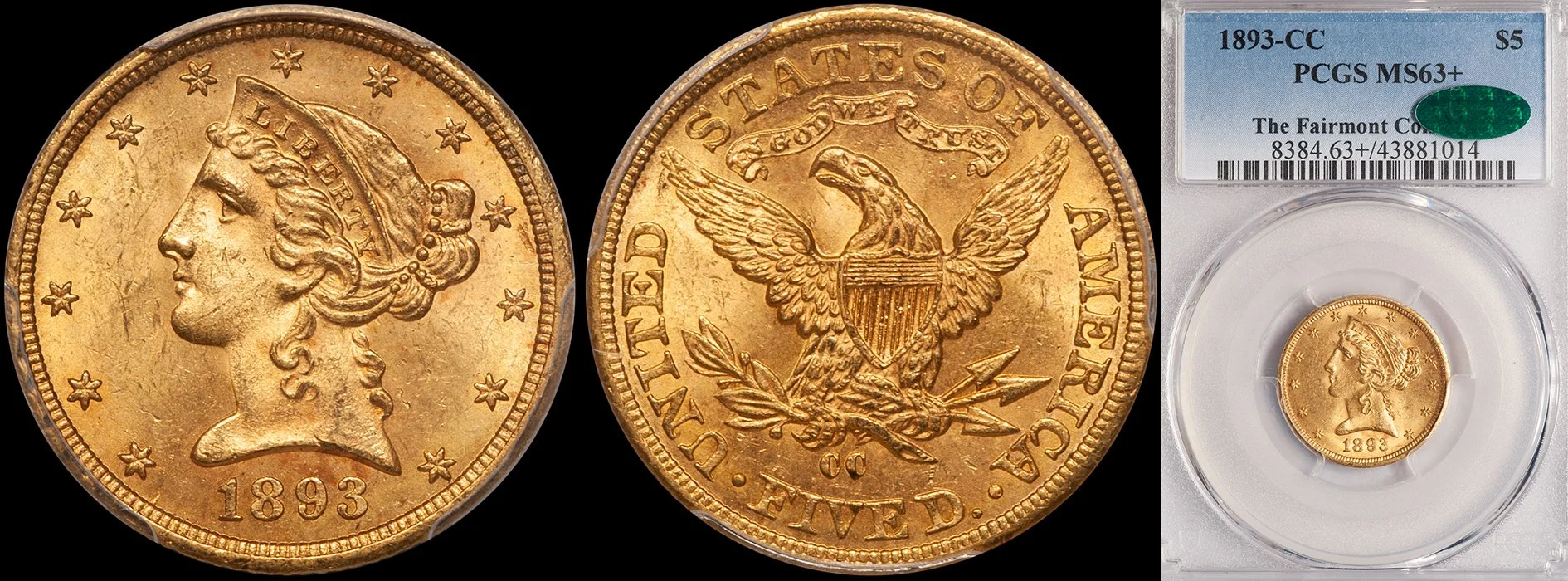What Constitutes Originality?
/The term “original” gets thrown around a lot these days. I should know; I probably use (and overuse) this term as much as anyone. But as much as this term is used, I think there is considerable confusion and disagreement over what original actually means. As it applies to 18th and 19th century United States gold, the concept of originality fits just a small percentage of actual coins. Unless you can trace a complete history of a coin, it is essentially impossible to state with certainty that it is truly original—i.e., it has never been cleaned or in anyway enhanced.
So what exactly do I think constitutes originality? I think it’s easier to explain what “isn’t original” than what “is original.”
A coin that is original has the right color for the issue. On rare gold coins, a give-away that a coin has “bad” color is when it is a bright orange or intense reddish-gold hue. This bad color tends to be artificially applied and it is generally done in an attempt to hide hairlines or surface problems. Original color tends to be a medium to deep green-gold or rose-gold hue. In all of the books that I’ve written, I’ve mentioned the color(s) that I’ve observed on specific gold issues. I highly suggest that you read these books when you are making a purchasing decision.
An original coin has surfaces that lack obtrusive hairlines. When a coin is cleaned, it tends to show hairlines. But here’s where a sticky subject comes up: what about a coin that was cleaned 75 or even 100 years ago and which has now naturally retoned in deep hues atop these hairlines. Is it original? Strictly speaking, no. Is it desirable? If the coloration is attractive and the hairlines are not too dense, absolutely. One has to operate under the assumption that virtually all 18th and 19th century United States gold coins have been cleaned at one time and light, unobtrusive hairlines can’t be considered as a detriment when calling a coin “original.”
An original coin also has luster that has not been significantly impaired (assuming, of course, that it does not have enough wear that the luster has been lost). When a coin is cleaned or processed, the luster is changed. Non-impaired luster has a circular or “cartwheel” pattern. When it is disturbed, the luster no longer rotates in a circular pattern. It becomes irregular and it appears to “jump” as opposed to spinning.
A coin that is original also does not have any sort of putty or “gunk” that has been applied to the surfaces in an attempt to hide imperfections. This can usually be determined by the presence of dull or whitish areas that can be seen when a coin is viewed in a good light source.
In summary, a coin that is original is none of the following:
-
It has not been recolored.
It is not unduly bright or shiny.
It does not have an abundance of hairlines, especially on both sides.
It does not have any foreign substances on the surfaces that were applied in an attempt to hide imperfections.
Given the fact that so few coins meet these stringent criteria, can the collector who favors original coins actually ever expect to find anything for his collection? I would say that the answer is yes.
There are still a decent number of coins that are either original or which have an “original appearance.” (Perhaps this last term is actually more accurate, given the fact that no one can state with absolute certainty that a 150 year old coin has or hasn’t been completely untouched in its long and winding road through numismatics and/or commerce).
Coins that have a good provenance tend to have an original appearance more often that coins that just happen to show up on Ebay. I think we can state with relative certainty that collectors like Mrs. Norweb and Louis Eliasberg were not sitting at home doctoring their gold coins.
Is original always best? That’s an interesting subjective question. There are gold coins with coloration that I refer to as “Euro” which have very dark hues caused by years and years of sitting undisturbed in bags in European vaults. This color is clearly natural but it can be pretty ugly; even to a purist like me who loves coloration on coins. In the case of a coin with dark Euro-grime on it, I could certainly see washing it in soap and water to remove the top layer of dirt. Once this is done, is the coin technically “original?” Or has it been processed? A smart dealer I know once told me that if a coin has been processed in a solution that isn’t lethal to humans upon drinking it is still natural. As you can see, this becomes a matter of semantics that is very difficult to answer.
The bottom line is that there IS clearly a “look” that coins that are perceived to be original do have. This look is appealing to sophisticated collectors and dealers and few coins display it.










